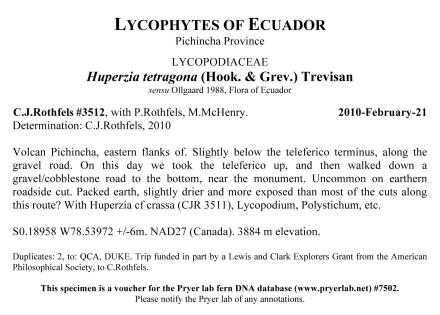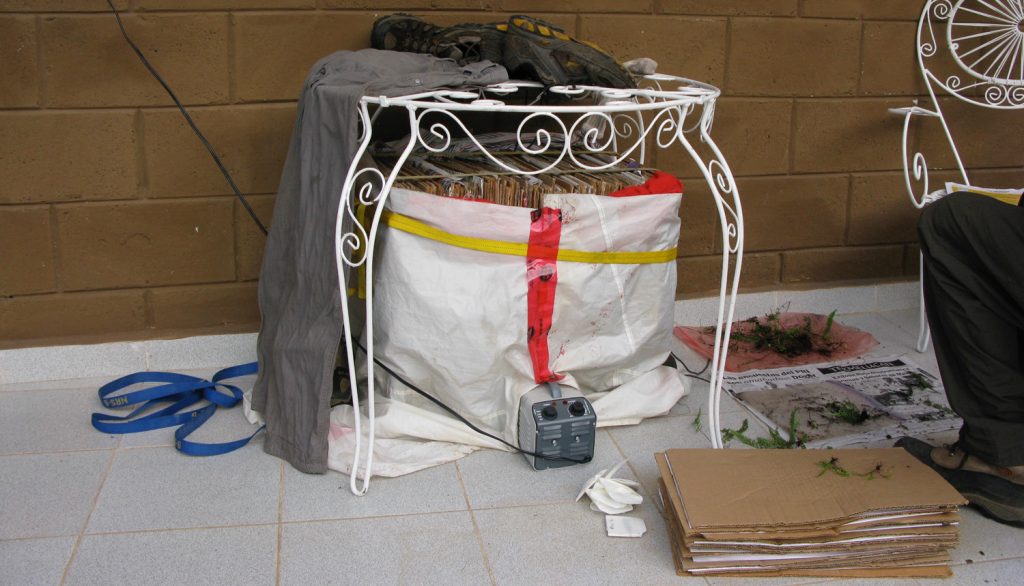Collection Data and Labels
One of the more time-consuming elements of collecting plant specimens is recording the metadata associated with each collection (“collection data”) and making the labels for the specimens. To do this, I use a combination of an Excel workbook for the label_data and an associated Word label_data_template for the labels. The spreadsheet is designed to be compatible with the import mechanisms of the Fern DNA Database, so the two primary worksheets each have two headers (one is in the format used by the Database, and the other in the format used by the label data template document). I enter the data originally in the “some_unprinted” worksheet, copy those over to the “to_database” worksheet when I’m ready to import them to the database, add in the database numbers and copy them to the “to_print” worksheet to print the labels. Finally, the records that have had all their labels printed are moved to the “all_printed” worksheet.
As always, the data make the specimen–the more thorough the collection data are, the more likely the specimen is to be useful to future researchers.

Why collections are useful and awesome
Joyce Cheri and Carrie Trimble made two videos as part of the Science in Real Life series, with host Molly Edwards.
First, how to make plant collections. And, second, on the importance of herbaria for research.
Permits
Click here to login to the University and Jepson Herbaria Institutional Permits page.
